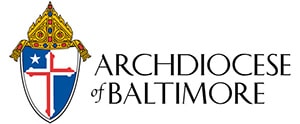By Christopher Gunty The Catholic Review
“Silent Night” and “O, Come, All Ye Faithful” in the middle of October? Christmas carols would be liturgically inappropriate, if not for the location of our Mass this morning. We celebrated using the readings from the Christmas Mass at Midnight in a small chapel, said by tradition to have been the room St. Jerome and St. Eusebius used to translate the Bible into Latin (the Vulgate Bible) starting in the year A.D. 384.
The chapel is less than 50 yards down a short passage from the actual Grotto of the Nativity – but “you can’t get there from here.” Due to questions over local control over the holy site, you can see the actual grotto through a small peephole in the door, but the passage itself is usually sealed. During the Mass, Bishop Denis J. Madden, auxiliary bishop of Baltimore and spiritual leader, encouraged the 23 priests on pilgrimage/retreat this week and next to consider their call from the Lord. “These spots will awaken something in us – jar something in us,” he said. “Just to be here with the Lord, for this we thank God.” In addition to the Responsorial Psalm, “Today is born our Savior, Christ the Lord,” readings included the passage from Luke’s Gospel that brought to life the event that occurred just down the corridor from where we sat: “While they were there, the time came for her to have her child, and she gave birth to her firstborn son.” As the gifts were prepared on the altar, we sang “Silent Night.” After Communion, chants of “O, come let us adore him, Christ the Lord,” echoed in the tiny cave.

Baltimore priests descend the stairs to enter te Grotto of the Nativity, where tradition holds is the site of the manger where Christ was born. (Catholic Review photo | Christopher Gunty)
To view and venerate the site where the manger is believed to have been, where Christ’s birth may have actually occurred, our pilgrimage group had to exit the Church of St. Catherine of Alexandria, which is cared for by the Holy Land Franciscans (Roman Catholic), and enter the Basilica of the Nativity, which is under the care of the Greek Orthodox and the Armenian Orthodox. From the basilica, pilgrims enter the grotto down a flight of stairs. There is only a moment to ponder the mystery of the Incarnation, and to venerate a silver star underneath an altar in the Grotto of the Nativity, and say a prayer while moving on so the next pilgrims can come in and do the same.
Later in the day, we spent a few minutes at the Shepherds’ Field. From a chapel there, you can see the Basilica of the Nativity in the distance from, and it’s here that shepherds may have received the herald angels’ admonition, “Do not be afraid!” that we heard earlier in the morning in Luke’s Gospel from the Christmas Midnight Mass.
Now there were shepherds in that region living in the fields and keeping the night watch over their flock. The angel of the Lord appeared to them and the glory of the Lord shone around them, and they were struck with great fear. The angel said to them, “Do not be afraid; for behold, I proclaim to you good news of great joy that will be for all the people. For today in the city of David a savior has been born for you who is Christ and Lord.
The chapel there, a fairly recent addition to the site, also under the care of the Holy Land Franciscans, features three depictions of the shepherds responding to the news. Inside the chapel, we sang, “Angels We Have Heard on High,” and our “Glorias in excelis Deo,” were sweetly singing o’er the plains. The area also is dotted with several small chapels built into the caves that were once what would have been shepherds’ residences while in the fields. When they were out in the pasture with their sheep, they would not have come in nightly, and they would often have slept in nearby caves instead of tents. Some of these small caves are now used for Masses for pilgrim groups. –



